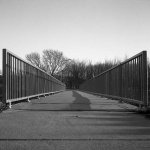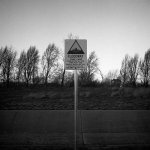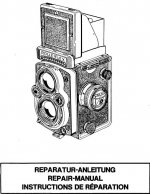Wayno
Well-known
Chris, I bought a screen from ebay a few years ago (seller from Hong Kong - "Redleica" or similar) and it was pretty good for the $25 I paid. Ric Oleson now sells similar screens, so you could email him too. These screens have a split image rangefinder spot and are very bright, but the fresnel grooves are fairly coarse. Great value for money though. The Mamiya screen would be superior if you can get one to cut down. I find that the original ground glass is actually not too bad for focusing (snaps in & out of focus nicely), but is very dim in the corners which hampers composition.
Another source of a mirror would be a specialist glass supplier, if you can track down a good one. There's at least one store here in Brisbane that sells first surface mirror, although it's thicker than most camera mirrors (so focus has to be adjusted). I got a couple of Rollei mirrors cut to the right shape for about $20.
The Rollei hoods fit on the outer bayonet and filters on the inner one, so no problem using them at the same time.
Same thing happened to me this morning - weird. I deleted the mystery attachments to my post.
Another source of a mirror would be a specialist glass supplier, if you can track down a good one. There's at least one store here in Brisbane that sells first surface mirror, although it's thicker than most camera mirrors (so focus has to be adjusted). I got a couple of Rollei mirrors cut to the right shape for about $20.
The Rollei hoods fit on the outer bayonet and filters on the inner one, so no problem using them at the same time.
Tarzak said:ummm.
I just scrolled to my post number 7 on this thread and there are photos attached there from Soviet Photo that I did not put there¿¿¿???
Can anyone else see them?
They weren't there when I first posted them.
Same thing happened to me this morning - weird. I deleted the mystery attachments to my post.





